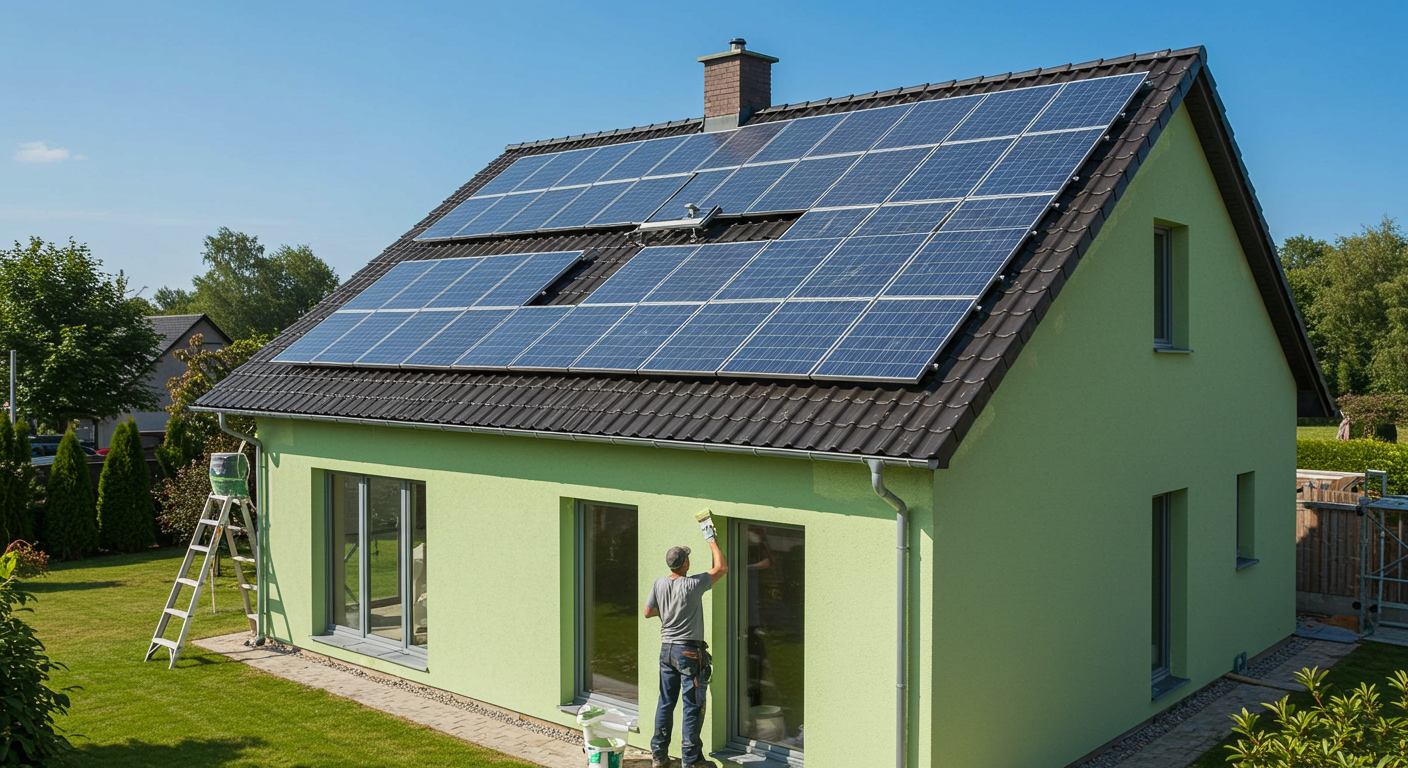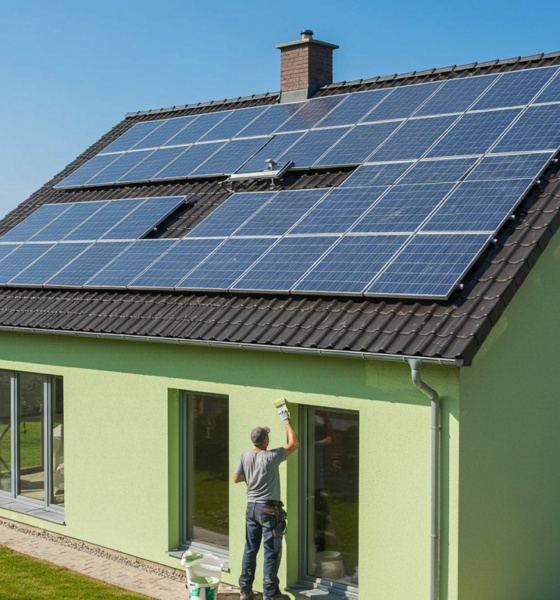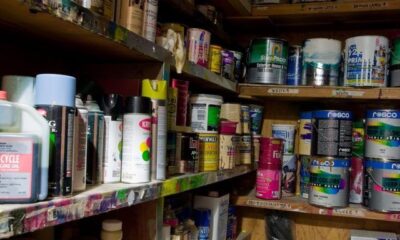Sustainability is becoming more popular than ever. A survey by the World Economic Forum and Ipsos found that 86% of people globally want to live greener lifestyles, showcasing a rise in commitment toward sustainability. This overwhelming majority reflects increasing public awareness of environmental issues and the readiness of citizens to go green in everyday life.
Reducing single-use plastics (which some countries have banned), making energy-conscious choices at home-even the smallest changes are all becoming ways for people to take responsibility and reduce their ecological footprint. However, even with all those people who want to live more in harmony with nature, high cost, inconvenience, and lack of access to green alternatives remain an obstacle to their actions.
One area people are most actively making changes to be more eco-friendly is in home improvement, especially when it comes to choosing more sustainable materials like low-VOC paints. Most homeowners don’t think about the environmental impact of paint manufacturing, from air pollution to chemical waste. It’s a sector that’s growing along with increasing demand for green home upgrades, and real estate is answering big in sales:. A survey found that 17% of REALTORS® reported high-performance homes-those with eco-friendly enhancements designed to improve health, efficiency, and durability-see an increase of 1% to 10% in the dollar value of offers compared to similar homes without such improvements. This statistic certainly shows the bottom line of going green: the financial benefits that come along with sustainable choices don’t just help the planet; they also raise property value.
The colors, textures, and finishes of the walls surrounding us tell stories. But beneath the surface of conventional paints lies a complex environmental and health tale that only recently has the world started to understand. As our global consciousness shifts toward sustainability, the importance of eco-friendly paint has moved from a niche concern to a mainstream priority. This transformation reflects a wider understanding of how our everyday choices impact both environmental health and personal well-being. The paint industry, traditionally associated with harsh chemicals and environmental hazards, is undergoing a remarkable evolution toward more sustainable alternatives that promise to protect our planet while delivering superior results.
Understanding Traditional Paint Problems
Traditional paint is invariably linked to environmental and health issues that long seemed to be swept under the carpet. Traditional paints are made with a concoction of harmful chemicals, synthetic materials, and toxic compounds that pose significant risks to both the environment and human health. During manufacturing, these paints contribute to air and water pollution, while their manufacturing often relies heavily on non-renewable resources and energy-intensive methods. Moreover, the disposal of traditional paint products is usually linked to soil contamination and groundwater pollution, thus bringing long-lasting environmental effects well beyond their initial use.
The Hidden Dangers of VOCs and Harmful Chemicals
Volatile Organic Compounds (VOCs) represent one of the most significant concerns associated with traditional paint. These chemicals readily evaporate at room temperature, releasing harmful gases into the air we breathe. The impact of VOCs extends far beyond the initial painting process, as these compounds can continue to off-gas for years after application. Common symptoms associated with VOC exposure include headaches, respiratory issues, eye irritation, and in some cases, more severe health complications. Additionally, traditional paints often contain other harmful substances such as heavy metals, formaldehyde, and phthalates, which have been linked to various health issues ranging from cognitive problems to reproductive complications.
What Makes Paint Eco-Friendly?
Eco-friendly paints signal a very critical change in strategy with respect to the formulation and manufacturing of paints. These products are fabricated with consideration to environmental stewardship by incorporating as many natural ingredients and renewable resources as possible. The characteristics that define eco-friendly paint include low or zero VOC content, natural pigments, renewable raw materials, and biodegradable components. Many eco-friendly paints are using plant-based binders instead of synthetic ones, and others use such innovative materials as recycled content or waste products from other industries. This considered approach to ingredients helps make sure the final product performs well with minimal environmental impact.
Sustainable Manufacturing Processes
The manufacturing of eco-friendly paints has re-invented the traditional process of production in literally every possible way to reduce the ecological footprint. Innovations include water-based production methods with minimal use of chemicals, energy-efficient manufacturing facilities possibly run by renewable energy, waste-minimizing, and resource-conserving closed-loop systems. Manufacturers of eco-friendly paints often have strict protocols over waste management, implementing recycling programs and responsible sourcing practices. This holistic approach to sustainability involves not only the paint itself but also packaging materials, transportation methods, and end-of-life considerations.
Benefits of Eco-Friendly Paint
The benefits of opting for eco-friendly paint, including protection for the environment, go way beyond that. It’s a very enticing combination of benefits these innovative products are now offering to homeowners, professionals, and commercial users alike. From improved indoor air quality to durability, eco-friendly paints are finally proving that sustainability and performance can indeed go hand in hand. They usually boast excellent coverage, far superior adhesion, and remarkable color stability-usually outperforming their traditional counterparts on most key performance metrics.
Health Benefits for Occupants
The health advantages of eco-friendly paint are particularly noteworthy. By eliminating or significantly reducing VOCs and other harmful chemicals, these paints create healthier indoor environments for building occupants. This is especially important in spaces occupied by sensitive individuals, including children, elderly people, and those with respiratory conditions or chemical sensitivities. Users often report fewer headaches, reduced allergic reactions, and improved overall well-being when switching to eco-friendly paint options. The absence of strong chemical odors during and after application also contributes to a more pleasant painting experience.
Performance Characteristics
Modern eco-friendly paints have overcome many of the performance limitations associated with early natural paint formulations. Today’s products offer exceptional durability, superior coverage, and excellent color retention. Many eco-friendly paints feature advanced technologies that provide additional benefits such as improved mold resistance, better breathability, and enhanced scratch resistance. These performance characteristics, combined with their environmental and health benefits, make eco-friendly paints an increasingly attractive option for both residential and commercial applications.
Choosing the Right Eco-Friendly Paint
Key considerations when selecting eco-friendly paint:
- Third-party Certification: Look for recognized environmental certifications that verify the manufacturer’s claims about their product’s eco-friendly characteristics and performance standards.
- VOC Content: While “low-VOC” and “zero-VOC” are common terms, understanding the specific VOC content helps make informed decisions about which product best suits your needs and environmental goals.
- Application Requirements: Consider the specific requirements of your project, including surface type, exposure conditions, and desired finish, as these factors influence which eco-friendly paint will perform best.
Understanding Labels and Standards
Reading and interpreting paint labels requires attention to detail and an understanding of industry terminology. Environmental claims should be backed by credible certification programs and clear documentation of testing methods. Look beyond marketing terms to examine specific ingredients, VOC content, and application recommendations. Manufacturers of genuine eco-friendly paints typically provide transparent information about their products’ environmental impact, including detailed material safety data sheets and environmental product declarations.
Best Practices for Using Eco-Friendly Paint
Successful application of eco-friendly paint often requires slightly different techniques compared to traditional products. Proper surface preparation remains crucial, but eco-friendly paints may have specific requirements for priming, application temperatures, and drying times. Following manufacturer recommendations ensures optimal results and maximizes the environmental benefits of choosing these products. Most eco-friendly paints perform best when applied in moderate temperatures and humidity levels, with adequate ventilation to promote proper drying and curing.
Maintenance and Responsible Disposal
Maintaining surfaces painted with eco-friendly products typically requires minimal effort, as these paints often resist dirt and maintain their appearance well over time. When disposal is necessary, many eco-friendly paints can be composted or disposed of through standard waste streams with minimal environmental impact. However, it’s essential to check local regulations and manufacturer guidelines for proper disposal methods. Many manufacturers also offer recycling programs for unused paint and containers, further reducing environmental impact.
The Future of Eco-Friendly Paint
Innovation in eco-friendly paint technology continues to accelerate, driven by increased environmental awareness and advancing technical capabilities. Emerging trends include the development of paints with additional functional properties, such as air-purifying capabilities, enhanced thermal properties, and self-cleaning characteristics. Research into new sustainable raw materials and production methods promises to further reduce the environmental impact of paint manufacturing while improving performance characteristics. The industry is also exploring novel approaches to packaging and distribution that could minimize waste and reduce transportation-related emissions.
Conclusion
The shift toward eco-friendly paint represents more than just a trend; it’s a fundamental transformation in how we think about and use one of our most common building materials. As awareness of environmental and health impacts continues to grow, the adoption of eco-friendly paint options will likely accelerate. By choosing these sustainable alternatives, we can contribute to a healthier planet while creating more comfortable and safer indoor environments. The future of paint is not just about color and coverage – it’s about responsibility, sustainability, and innovation working together to protect both our homes and our planet.


 Environment10 months ago
Environment10 months agoAre Polymer Banknotes: an Eco-Friendly Trend or a Groundswell?

 Environment11 months ago
Environment11 months agoEco-Friendly Home Improvements: Top 7 Upgrades for 2025

 Features9 months ago
Features9 months agoEco-Friendly Cryptocurrencies: Sustainable Investment Choices

 Features10 months ago
Features10 months agoEco-Friendly Crypto Traders Must Find the Right Exchange




























